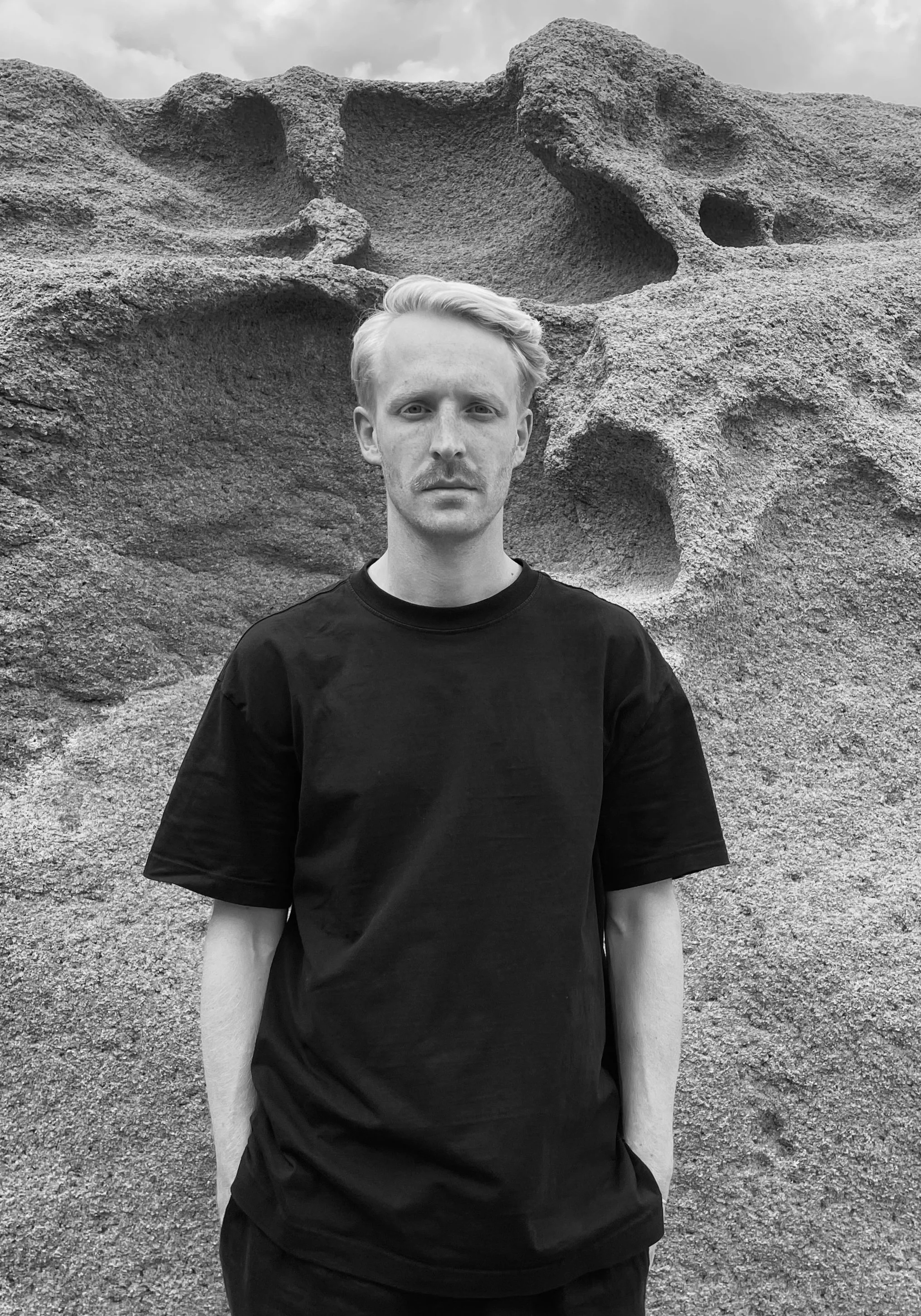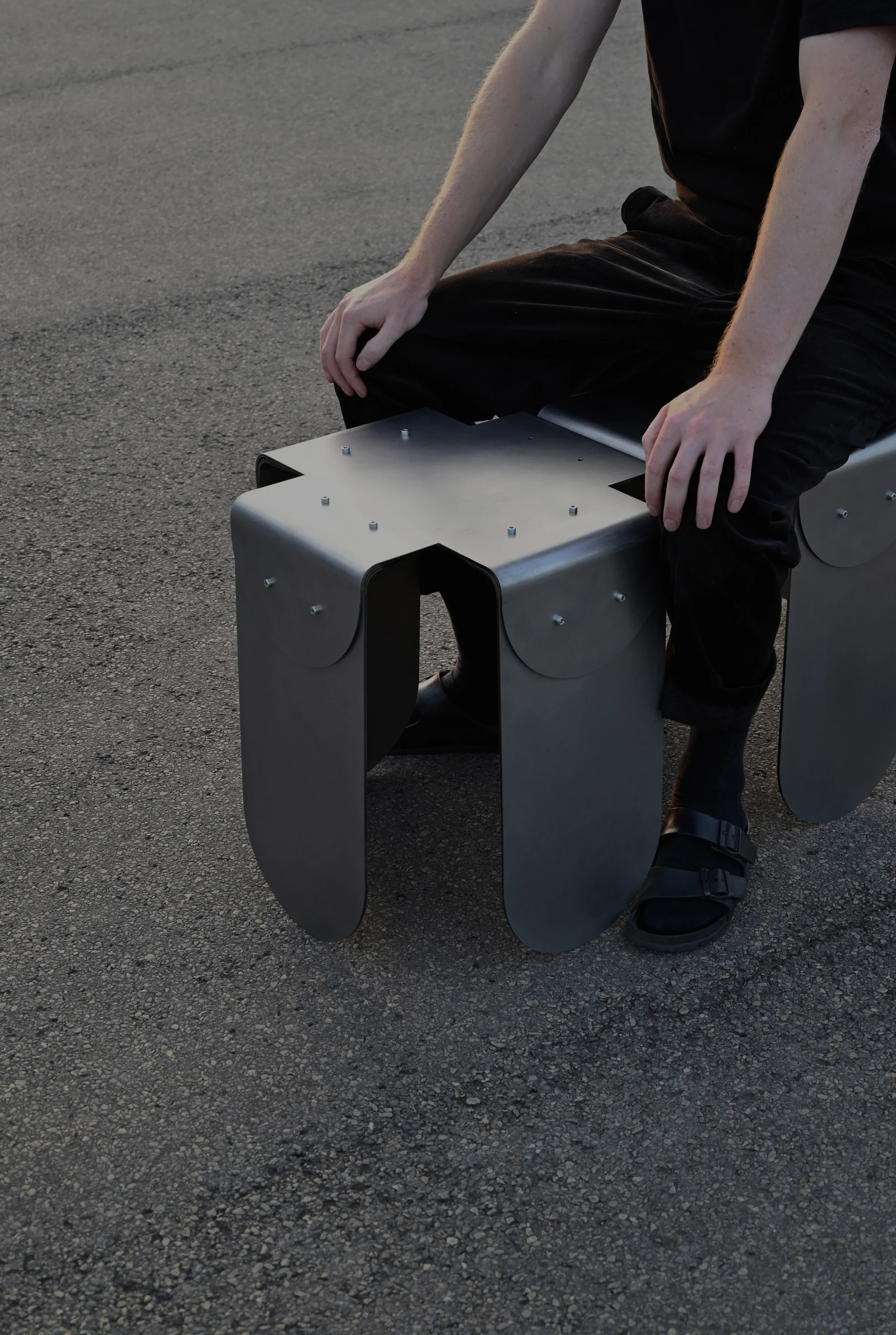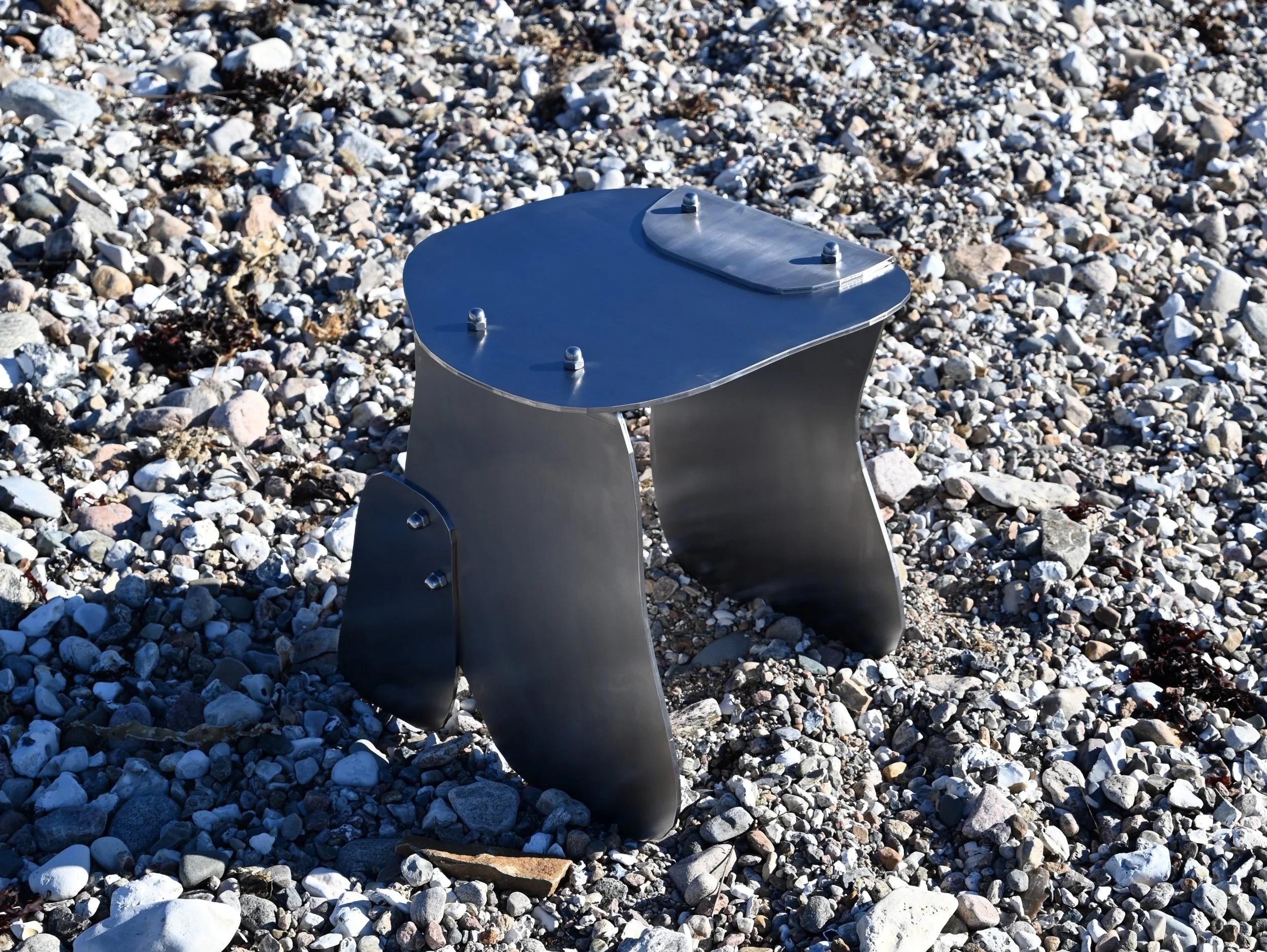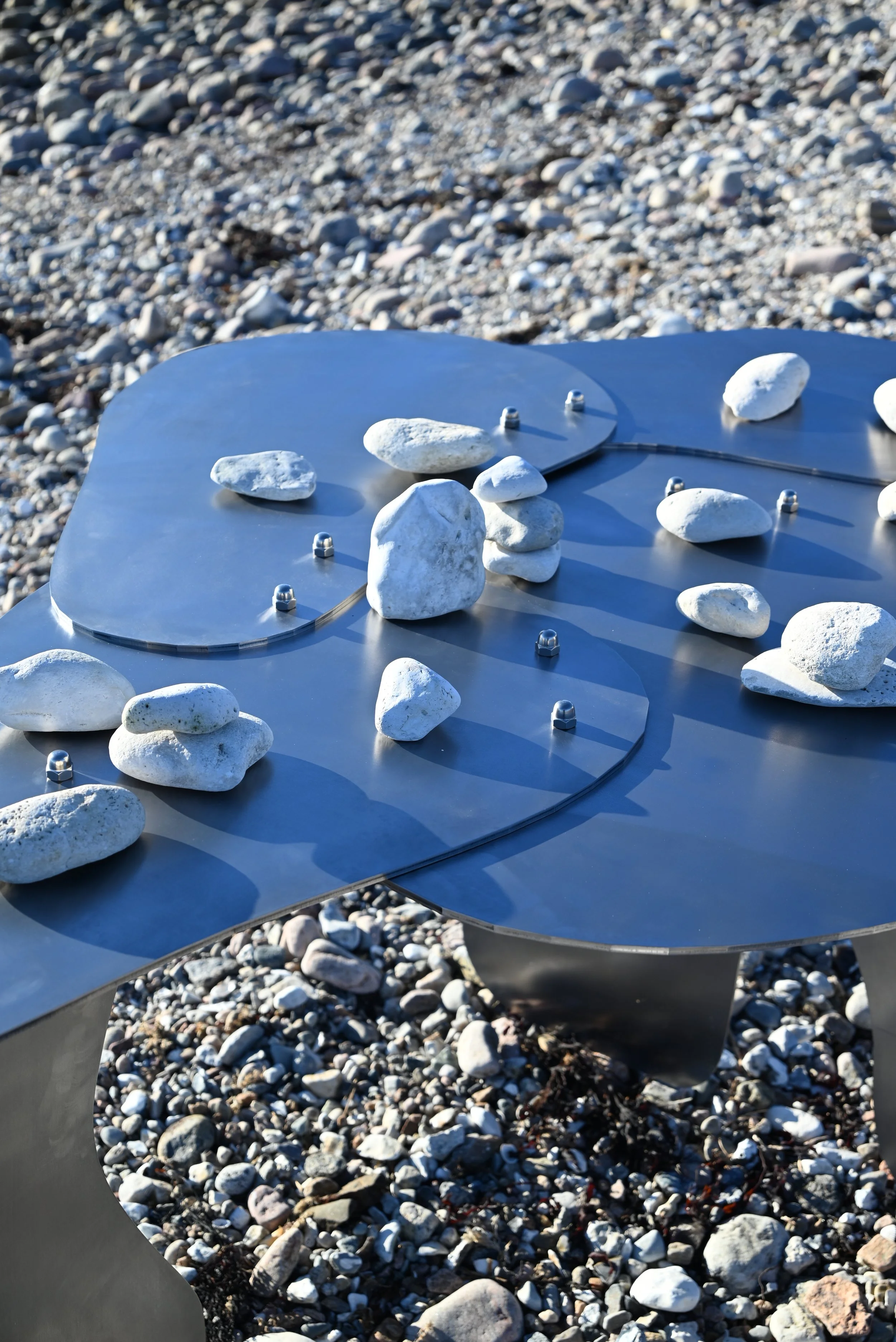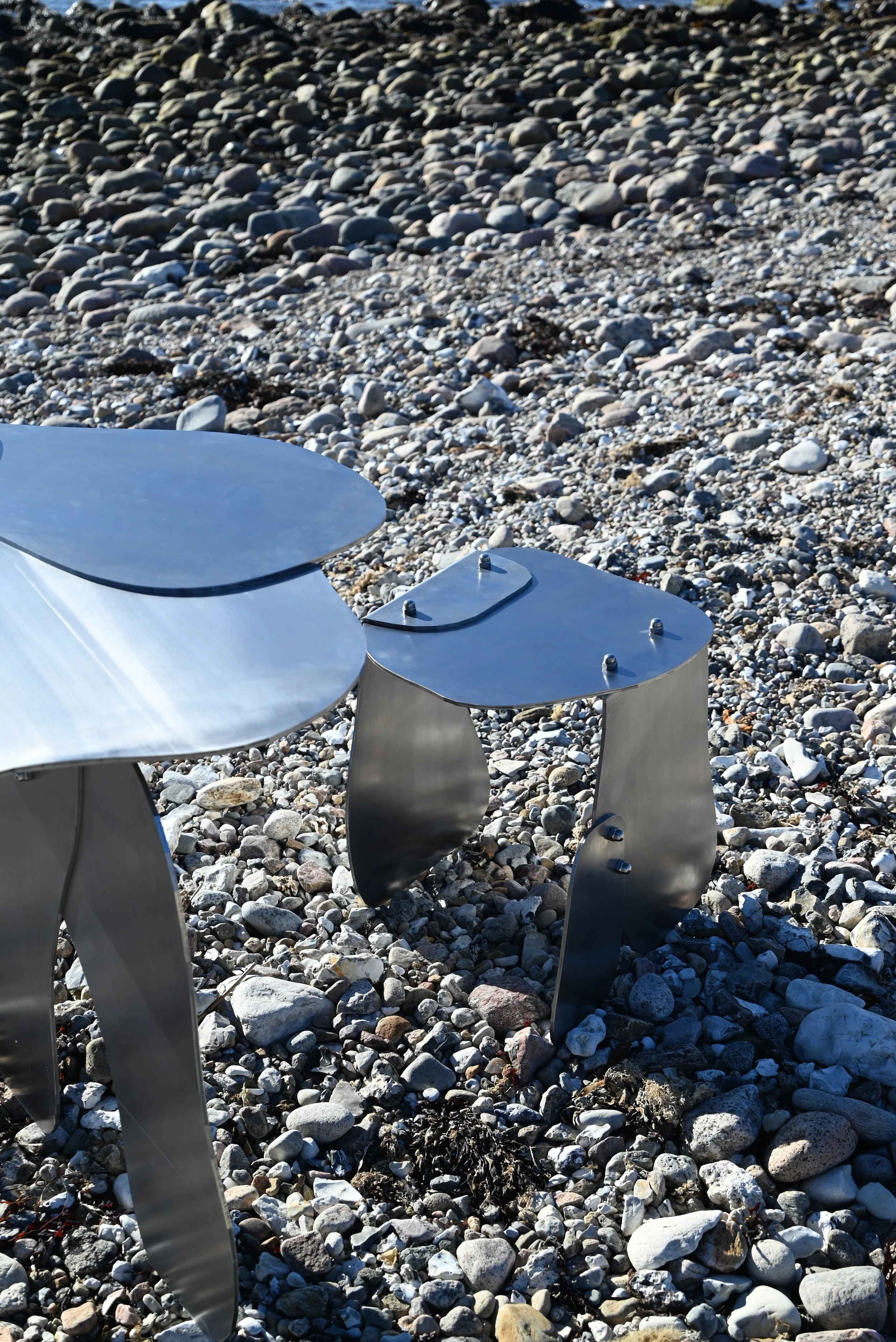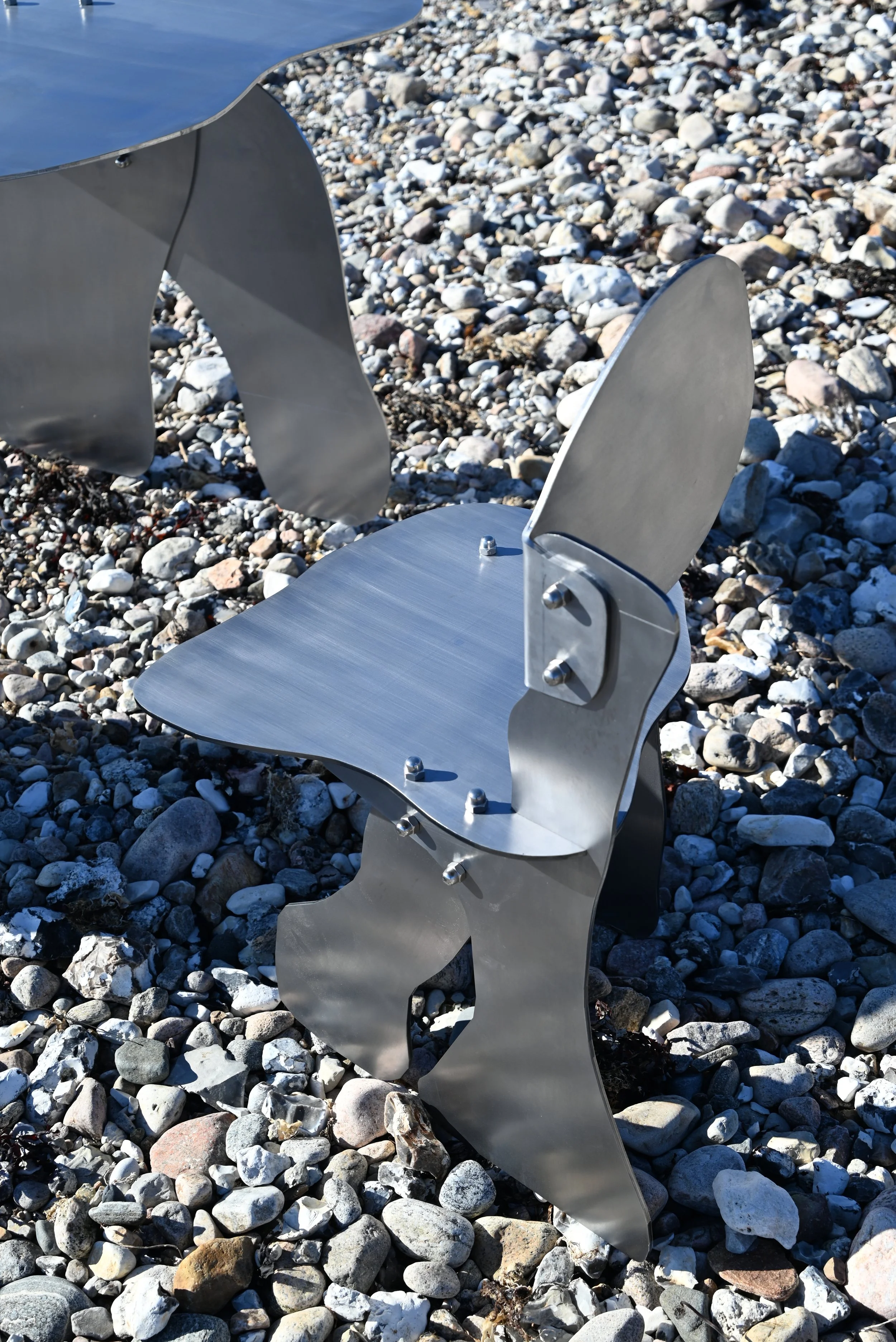Daniel Stegen
Daniel, please introduce yourself:
My name is Daniel Stegen and I studied interior design at TH-OWL in Detmold. As a designer, my passion lies in designing furniture. My works are mainly made of metal and are characterized by the connection between art and design. The shape of my designs are strongly influenced by the material and inspired by the random beauty of nature.
Daniel Stegen
#1 You originally come from the craft sector,
are a trained upholsterer and interior designer.
What motivated you to study after your apprenticeship?
My decision to study interior design is based on my passion for design and craftsmanship. The opportunity to combine these aspects was a decisive factor in my choice of study. Even during my apprenticeship as an upholsterer, I was able to use my craftsmanship and aesthetic flair to give furniture its special effect. I wasn't only fascinated by the functionality, but also by the of the different pieces of furniture fascinated me. Working as an upholsterer has allowed me to not only upholster, but to design. Even then, I felt the need to learn more about the interplay between architecture, light, materials and space. Studying interior design allowed me to combine my technical skills with theoretical knowledge and creative concepts. The combination of my craft background and the design training during my studies is now the perfect basis for creating and designing prototypes.
#2 During your studies, you started to implement your own furniture projects and dedicated yourself to art as well as furniture design. What do you enjoy most about it? What challenges do you face during the design process?
What inspires me about my furniture projects and artistic work is the opportunity to give free play to my creativity to create completely new, free forms. It fascinates me to explore materials in their original form and to work with them in a handcrafted way. The connection between art and craft is an inspiring process for me. While my furniture projects are often characterized by clear and functionality, art gives me the freedom to push boundaries and work with experimental approaches. The biggest challenge is to find the balance between aesthetics, functionality and technical requirements.
Bench AEIS - B
#3 Your work has a very artistic and free approach, such as in the “Deep Stone Collection” How did you go about designing it? Are there any influences or methods that particularly influence your design work?
The idea for the Deep Stone Collection arose from my fascination with the natural beauty and structure of stone. My aim was to combine the raw, timeless aesthetics of the material with a modern, artistic design language. The design process began with an intensive examination of the shape and texture of stones. I wanted not only a functional design, but also to emphasize the emotional depth and power of the stones. At the beginning, I made sketches and material studies. I was inspired by natural processes such as layering, fractures and shapes, which are reflected in the structure and design of the Deep Stone Collection. My work is strongly influenced by nature and its forms. The harmonious balance between chaos and order in nature fascinates me and I try to capture this dynamic in my work. An important part of my work is also the experimental approach. I like to work directly with the material and can act directly – thanks to my manual skills. In the Deep Stone Collection, each piece should not only work as a piece of furniture, but also as an artistic object.
Deep Stone Collection Stool
#4 Your designs seem like a fusion of art and functionality - how do you find the balance between the two?
The balance between art and functionality is a central aspect for me. I always try to find a very material approach to design. In my work, the material is the main design tool. As the process progresses, the function becomes more and more important. For me, the balance lies in the fact that art and functionality do not conflict, but complement each other.
#5 You work predominantly with steel/metal - what fascinates you about this material? How do you see the role of metal in the future of furniture design, especially in the context of sustainability and innovation?
Metal, especially steel, impresses me with its versatility and resilience. It is a material that can express both raw strength and delicate elegance. The ability to shape, weld and polish metal allows me to create furniture that is robust, durable and aesthetic at the same time. Another thing is the timelessness of metal. It ages in its own way, giving each piece of furniture its own character. Metal also offers an exciting dialogue between industrial precision and individual craftsmanship. Because of its durability and recyclability, it can be reused over and over again. Old pieces of metal can be melted down and reused without compromising quality.
Deep Stone Collection
#6 How do you approach new projects? Are there rituals or steps that help you to get the creative process going?
For me, every new project begins with a period of observation and inspiration. I capture these impressions in sketches and photographs, drawing inspiration from both nature and urban spaces. Nature fascinates me with its organic forms and the apparent perfection of the unplanned. Urban space inspires me with its structure, dynamics and the way people interact in it. Once I have the initial ideas, I start with more sketches and quickly move to the 1:1 prototype. At this stage, I experiment intensively with materials and forms. Throughout the design process, many prototypes are created, which constantly evolve and lead to new approaches.
#7 How do you see your role as an interior architect, designer and artist in the design industry and what does it mean for you to combine these disciplines?
As an interior architect, designer and artist, I see my role as an interface between functionality, aesthetics and emotional impact. Combining these disciplines means designing free furniture in relation to spaces. In terms of interior design, I determine functionality and spatial structures. It's about proportions and how I see my furniture in relation to the space. As a designer I create the interplay between form and function, while as an artist I can incorporate free and emotional elements. The result is a concept that tells stories, provokes or touches. The focus is on the fact that my furniture is a work of art and interacts with its user.
Chair, Stool & Table - C1513
#8 How does your environment influence your work?
My environment is an important aspect of my work. I consciously perceive both the natural surroundings and the urban space and incorporate them into my design. It is important to me to quickly develop my own signature style that which emphasizes the material and the design. Right from the start, I concentrate on my idea, the material and the design.
#9 Three things that inspire you at the moment:
Modularity, ornamentation and Adolf Loos
#10 What do you currently read, watch, listen to?
I'm currently reading Adolf Loos - Why architecture is not art. I really like listening to Ben Howard & Mighty Oaks. I also highly recommend the podcast without the hype.

